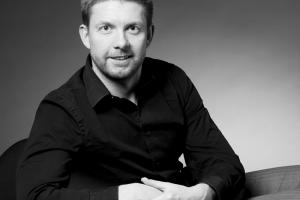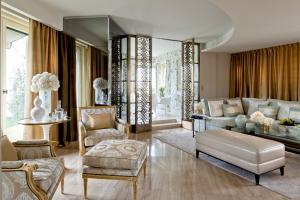Thirty years ago, Maarten Vanneste set up a video production company in Turnhout. Today, his ABBIT Meeting Innovators has grown into a permanent establishment with a team of 10 employees (including numerous freelance employees). ABBIT do more than video; they work on the architecture and content of meetings. Maarten is also the driving force behind Meeting Design Institute, a member association that supports the professionalisation of the sector.
The meeting room at ABBIT Meeting Innovators has a table with Lego blocks on it (Lego Serious Play). Furthermore, there are a number of Catchboxes (microphones in soft cubes, you throw them from one speaker to another on a stage) and a pile of folded-up cardboard, which you can use to make chairs. Like a laboratory, tools are collected that can help design meetings in a substantive way or that can make meetings more efficient and more interactive.
Meeting design has, in any case, become an important area in the MICE industry. MICE offices like SEAUTON are also active in this field (see SEAUTON case below). For this reason, SEAUTON approached ABBIT for an inspiring discussion with this trendsetter in meeting design.
Maarten Vanneste: Companies that spend money on organising bigmeetings and conferences are starting to think increasingly in terms of meeting design and Return On Investment. (ROI). This move also has a theoretical base. For example, at Elling Hamso's Event ROI Institute you can follow a training course in meeting design. The starting point is that a conference has five levels.
To start with, people need to have eaten well, or to have had a good night's sleep in their accommodation. This is fundamental. Secondly, they need to learn something and to get to know a number of people. Then they go home and they have to do something with what they've learnt and the new network. That's level three. Fourthly, what they do needs to have an impact, and finally, the impact has to be beneficial for ROI.
That sounds very logical, but how can you apply these principles in a specific way to meeting design?
To design a meeting, you work through these questions in reverse. What is the ROI that you want as a company? What impact does it require? What do the participants need to do to achieve this? If they need to do this, what do we have to teach them? And what environment will they learn this most effectively in?
What's the most difficult step in this process?
Level two: what do the participants need to learn and who do they have to get to know? That's a very difficult question. Yes, finding a keynote speaker, that's possible, but defining objectives is a different matter... We always suggest four steps: describe and quantify the objectives, design the meeting in accordance with this, implement it, and then measure whether it was successful.
Is this way of work a trend?
I don't know. You see it increasingly often, but it's a gradual process. In the meantime, courses have been set up where you can study event management and people are starting to take meeting design and ROI seriously. One of the biggest global players in the MICE industry, the Kenes Groups, has just advertised and filled a vacancy for a Meeting Architect.
In business, it needs to come from above. The CEO should demand that meetings and conferences are considered from a strategic point of view. This is certainly a very common business practice these days.
One thing that is a trend is the range of tools that help us design and implement meetings.
Has meeting design or meeting architecture come about as a result of economic pressure?
Yes. In fact, meetings are increasingly falling into the clutches of procurement. Very often they don't understand the concept, but we don't have a counter narrative. In any case, these days we're all in the process of increasing the level of accountability in terms of meetings, not just financial accountability, but also in relation to the environment.
Are people travelling less for business meetings for environmental reasons?
On the contrary. It's becoming increasingly common for people who form a group online, such as via LinkedIn, to suggest at some point or another: why don't we get together in real life? New meetings for new groups. It seems meeting one other is still important.
Hasn't technology come up with any alternatives?
Well, you can do a great deal with it already. At ABBIT, we're focusing a great deal of our attention on the multi-hub approach. This is actually a new type of meeting. We provided this for a pharmaceutical company in Eastern Europe. Six locations, with three engineers at each location. The technology we provide there enables a real discussion to take place, as if everyone were sitting around the same table. Participants can respond via an ABBIT laptop on the table, and provide ideas for everyone to see immediately or at a later time. Afterwards, all responses are put together in a PDF; no more messing around with post-its. We also have a voting system where the various locations can vote and the results appear immediately on the screen. There's much more to it than watching presentations together; a real debate takes place.
The multi-hub system is more than streaming. It requires good facilities on location, but we firmly believe in it.
Info: www.abbit.eu
Meeting Design Institute http://www.meetingsupport.org/
ABBIT is also the organiser of The FRESH conference (the international meeting design conference): http://www.thefreshconference.com/
Case: Seauton & the European Charcot Foundation
SEAUTON did not just take care of logistics for the Annual Meeting of the European Charcot Foundation. In consultation with the foundation's president, the decision was taken to make the scientific presentations during the conference available via livestream using a multi-hub system. Health care professionals in five different European capital cities were able to follow the conference together in real time. The mobile application meant that people present in the various hubs could actively participate in the question and answer sessions. "The meeting design helped the European Charcot Foundation realise its mission," Stefaan Decorte, Senior Project Manager at SEAUTON, explains. "After all, the aim of the foundation is to disseminate scientific knowledge about Multiple Sclerosis. Together with the management team at Charcot Foundation, we established clear aims for the conference, and then translated these aims into meeting design. That's the real added value of our cooperation."


